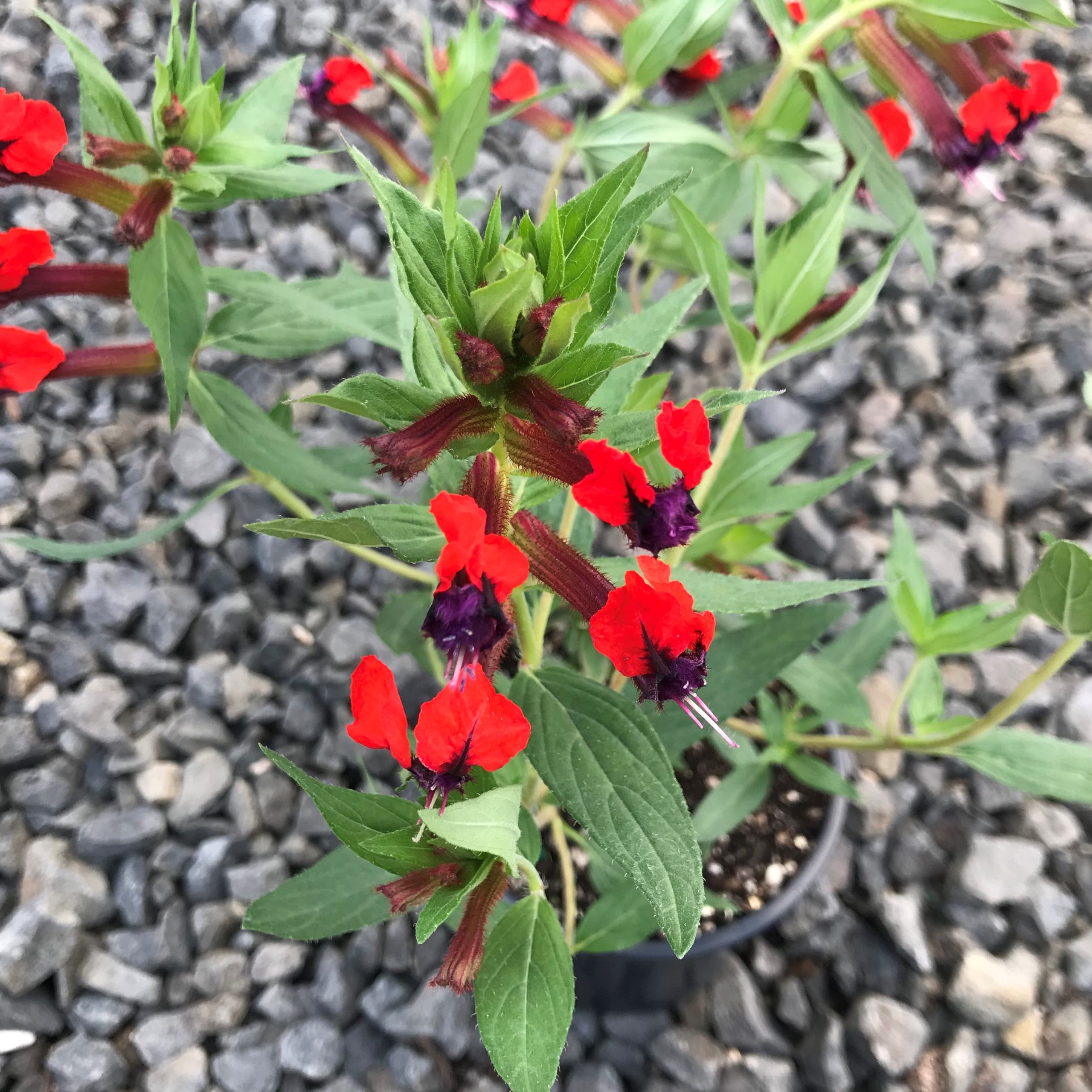Behold the enchanting Cuphea bat face plant, a botanical wonder that captivates with its whimsical resemblance to the nocturnal creature. Its captivating foliage and enigmatic blooms have earned it a place in the hearts of gardeners and nature enthusiasts alike.
This captivating plant boasts unique physical attributes that set it apart from its botanical peers. Its foliage is a vibrant shade of emerald green, with ovate leaves that bear a striking resemblance to bat wings. The true magic lies in its captivating flowers, which bloom in profusion throughout the summer months. These exquisite blooms resemble tiny bat faces, complete with protruding “ears” and a delicate “nose.”
Botanical Characteristics and Classification: Cuphea Bat Face Plant

Cuphea bat face plant, scientifically classified as Cuphea llavea, is an intriguing botanical specimen known for its unique physical attributes and distinct taxonomic placement.
The foliage of this plant is composed of small, ovate leaves arranged in an opposite pattern along the stem. These leaves exhibit a glossy texture and a vibrant green coloration, providing a striking contrast to the plant’s more unusual features.
Flowers
The most captivating aspect of the Cuphea bat face plant lies in its extraordinary flowers. These blooms emerge from the leaf axils and possess a distinctive tubular shape, resembling the profile of a bat’s face. The flowers typically display a vibrant scarlet or purple hue, further enhancing their captivating appearance.
Growth Habit
Cuphea bat face plant exhibits a bushy growth habit, forming dense clumps that can reach a height of approximately 1-2 feet. This compact nature makes it an ideal choice for container gardening or as a low-growing border plant in landscaping applications.
Taxonomic Classification
Within the plant kingdom, Cuphea bat face plant belongs to the family Lythraceae, which encompasses a diverse range of flowering plants. The genus Cuphea comprises over 250 species, with C. llavea being a prominent member known for its distinctive bat-like flowers.
Cultivation and Care Requirements

Growing Cuphea bat face plant is relatively easy with proper care. This versatile plant thrives in various conditions, making it a suitable choice for both indoor and outdoor gardening.
Soil Conditions
Cuphea bat face plant prefers well-drained, fertile soil with a pH range of 5.5 to 6.5. To ensure optimal drainage, amend the soil with organic matter such as compost or peat moss.
Sunlight Exposure
This plant enjoys bright, indirect light but can also tolerate partial shade. Avoid placing it in direct sunlight, as it can scorch the leaves.
Watering Frequency
Water the plant regularly, allowing the soil to dry out slightly between waterings. Overwatering can lead to root rot, while underwatering can cause the leaves to wilt.
Propagation
Cuphea bat face plant can be propagated through stem cuttings or seeds. Stem cuttings should be taken from healthy plants and rooted in moist soil. Seeds can be sown indoors or outdoors in spring or summer.
Common Pests and Diseases
Aphids, mealybugs, and spider mites are common pests that can affect Cuphea bat face plant. These pests can be controlled using insecticidal soap or neem oil. The plant is also susceptible to fungal diseases such as powdery mildew and leaf spot. Proper watering practices and good air circulation can help prevent these diseases.
Horticultural Uses and Applications

Cuphea bat face plant offers versatile applications in landscaping and gardening, adding a touch of whimsy and ecological value to outdoor spaces.
In Flower Beds and Borders, Cuphea bat face plant
The compact size and dense foliage of Cuphea bat face plant make it an ideal choice for flower beds and borders. Its vibrant flowers create eye-catching accents, while the foliage provides a lush backdrop for other plants.
In Containers
Cuphea bat face plant thrives in containers, making it suitable for balconies, patios, and small gardens. Its trailing habit cascades over the edges of pots, creating a charming display.
Attracting Wildlife and Beneficial Insects
The nectar-rich flowers of Cuphea bat face plant attract a variety of butterflies, bees, and hummingbirds. These pollinators not only enhance the beauty of the garden but also contribute to pollination and seed dispersal.